Latest Publications
A distinct, high affinity, alkaline phosphatase facilitates occupation of P-depleted environments by marine picocyanobacteria
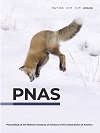 Alberto Torcello-Requena, Andrew Murphy, Ian D. E. A. Lidbury, Frances D. Pitt, Richard Stark, Andrew D. Millard, Richard J. Puxty, Yin Chen, David J. Scanlan
Alberto Torcello-Requena, Andrew Murphy, Ian D. E. A. Lidbury, Frances D. Pitt, Richard Stark, Andrew D. Millard, Richard J. Puxty, Yin Chen, David J. Scanlan
Marine picocyanobacteria of the genera Prochlorococcus and Synechococcus, the two most abundant phototrophs on Earth, thrive in oligotrophic oceanic regions. While it is well known that specific lineages are exquisitely adapted to prevailing in situ light and temperature regimes, much less is known of the molecular machinery required to facilitate occupancy of these low-nutrient environments. Here, we describe a hitherto unknown alkaline phosphatase, Psip1, that has a substantially higher affinity for phosphomonoesters than other well-known phosphatases like PhoA, PhoX, or PhoD and is restricted to clade III Synechococcus and a subset of high light I-adapted Prochlorococcus strains, suggesting niche specificity.
Imaging Single-Cell Ca2+ Dynamics of Brainstem Neurons and Glia in Freely Behaving Mice
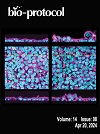 Amol M. Bhandare, Nicholas Dale, Robert T. R. Huckstepp
Amol M. Bhandare, Nicholas Dale, Robert T. R. Huckstepp
In vivo brain imaging, using a combination of genetically encoded Ca2+ indicators and gradient refractive index (GRIN) lens, is a transformative technology that has become an increasingly potent research tool over the last decade. We have refined the intravital imaging technique to image deep brain nuclei in the ventral medulla oblongata, one of the most difficult brain structures to image due to the movement of brainstem structures outside the cranial cavity during free behaviour (head and neck movement), whose targeting requires GRIN lens insertion through the cerebellum—a key structure for balance and movement. Our protocol refines the implantation method of GRIN lenses, giving the best possible approach to image deep extracranial brainstem structures in awake rodents with improved cell rejection/acceptance criteria during analysis. This revised method paves the way to image challenging brainstem structures to investigate their role in complex behaviours such as breathing, circulation, sleep, digestion, and swallowing, and could be extended to image and study the role of cerebellum in balance, movement, motor learning, and beyond.
Coordinated transcriptional response to environmental stress by a Synechococcus virus
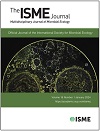 Branko Rihtman, Alberto Torcello-Requena, Alvetina Mikhaylina, Richard J Puxty, Martha RJ Clokie, Andrew D Millard, David J Scanlan
Branko Rihtman, Alberto Torcello-Requena, Alvetina Mikhaylina, Richard J Puxty, Martha RJ Clokie, Andrew D Millard, David J Scanlan
Phosphorus (P) is a major abiotic control on the marine cyanobacterium Synechococcus. Some viruses infecting Synechococcus have acquired, from their host, a gene encoding a P substrate binding protein (PstS), thought to improve virus replication under phosphate starvation. Yet, pstS is uncommon amongst cyanobacterial viruses. Thus, we asked how infections with viruses lacking PstS are affected by P scarcity. We show that production of infectious virus particles of such viruses is reduced in low P conditions. Our data shows how phage genomes, lacking obvious P-stress related genes, have evolved to exploit their host’s environmental sensing mechanisms to coordinate their own gene expression in response to resource limitation.
Postintervention Immunological and Entomological Survey of Lymphatic Filariasis in the City of Olinda, Brazil, 2015-2016
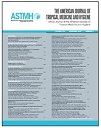 Anita Ramesh, Paula Oliveira, Mary Cameron, Priscila M S Castanha, Thomas Walker, Audrey Lenhart, Lucy Impoinvil, Neal Alexander, Zulma Medeiros, André Sá, Abraham Rocha, Wayner V Souza, Amélia Maciel, Cynthia Braga
Anita Ramesh, Paula Oliveira, Mary Cameron, Priscila M S Castanha, Thomas Walker, Audrey Lenhart, Lucy Impoinvil, Neal Alexander, Zulma Medeiros, André Sá, Abraham Rocha, Wayner V Souza, Amélia Maciel, Cynthia Braga
Lymphatic filariasis (LF) is a leading cause of disability due to infectious disease worldwide. The Recife Metropolitan Region (RMR) is the only remaining focus of LF in Brazil, where the parasite Wuchereria bancrofti is transmitted solely by the mosquito Culex quinquefasciatus. This study reports the results of transmission assessment surveys and molecular xenomonitoring in the city of Olinda, RMR, after nearly 15 years (2015-2016) of interventions for LF elimination. Participants were screened for W. bancrofti antigen via immunochromatographic card tests (ICT), and all 1,170 children from MDA areas and the entire population sample of 990 residents in non-MDA areas were ICT negative. In MDA areas, a total of 3,152 female Cx. quinquefasciatus mosquitoes in 277 households were collected via aspiration. RT-qPCR of 233 pools of mosquitos were negative for W. bancrofti RNA; an independent reference laboratory confirmed these results. These results provide evidence that LF transmission has been halted in this setting.
Unveiling the potential of Daldinia eschscholtzii MFLUCC 19-0629 through bioactivity and bioinformatics studies for enhanced sustainable agriculture production
 Brooks S, Weaver JA, Klomchit A, Alharthi SA, Onlamun T, Nurani R, Vong TK, Alberti F and Greco C
Brooks S, Weaver JA, Klomchit A, Alharthi SA, Onlamun T, Nurani R, Vong TK, Alberti F and Greco C
Endophytic fungi constitute a rich source of secondary metabolites that can be manipulated to produce desirable novel analogs for combating current agricultural challenges for crop production, especially controlling plant disease. The endophytic fungus Daldinia eschscholtzii MFLUCC 19-0629, was newly isolated from tropical ancient plants, Oncosperma sp., and displays a broad-spectrum of antifungal and antibacterial activities against several plant pathogens. The discovery that D. eschscholtzii MFLUCC 19-0629 has a broad spectrum of antimicrobial activity against seven major plant pathogenic microorganisms relevant to crop production and its complete genome sequence carries immense importance in the advancement of novel microbial biocontrol agents (MBCAs). This also unveils the prospect of uncovering new compounds that could be utilized for sustainable agriculture and pharmaceutical purposes.
The contribution of an X chromosome QTL to non-Mendelian inheritance and unequal chromosomal segregation in A. freiburgense
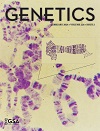 Talal Al-Yazeedi, Sally Adams, Sophie Tandonnet, Anisa Turner, Jun Kim, Junho Lee, Andre Pires-daSilva
Talal Al-Yazeedi, Sally Adams, Sophie Tandonnet, Anisa Turner, Jun Kim, Junho Lee, Andre Pires-daSilva
Auanema freiburgense is a nematode with males, females, and selfing hermaphrodites. When XO males mate with XX females, they typically produce a low proportion of XO offspring because they eliminate nullo-X spermatids. This occurs because of an unequal distribution of essential cellular organelles during sperm formation. Intriguingly, the interbreeding of two A. freiburgense strains results in hybrid males capable of producing viable nullo-X sperm. Consequently, when these hybrid males mate with females, they yield a high percentage of male offspring. To uncover the genetic basis of nullo-spermatid elimination and X- chromosome drive, we generated a genome assembly for A. freiburgense, and genotyped the intercrossed lines. This analysis identified a Quantitative Trait Locus spanning several X chromosome genes linked to the non-Mendelian inheritance patterns observed in A. freiburgense. This finding provides valuable clues to the underlying factors involved in asymmetric organelle partitioning during male meiotic division and thus non-Mendelian transmission of the X chromosome and sex ratios.
